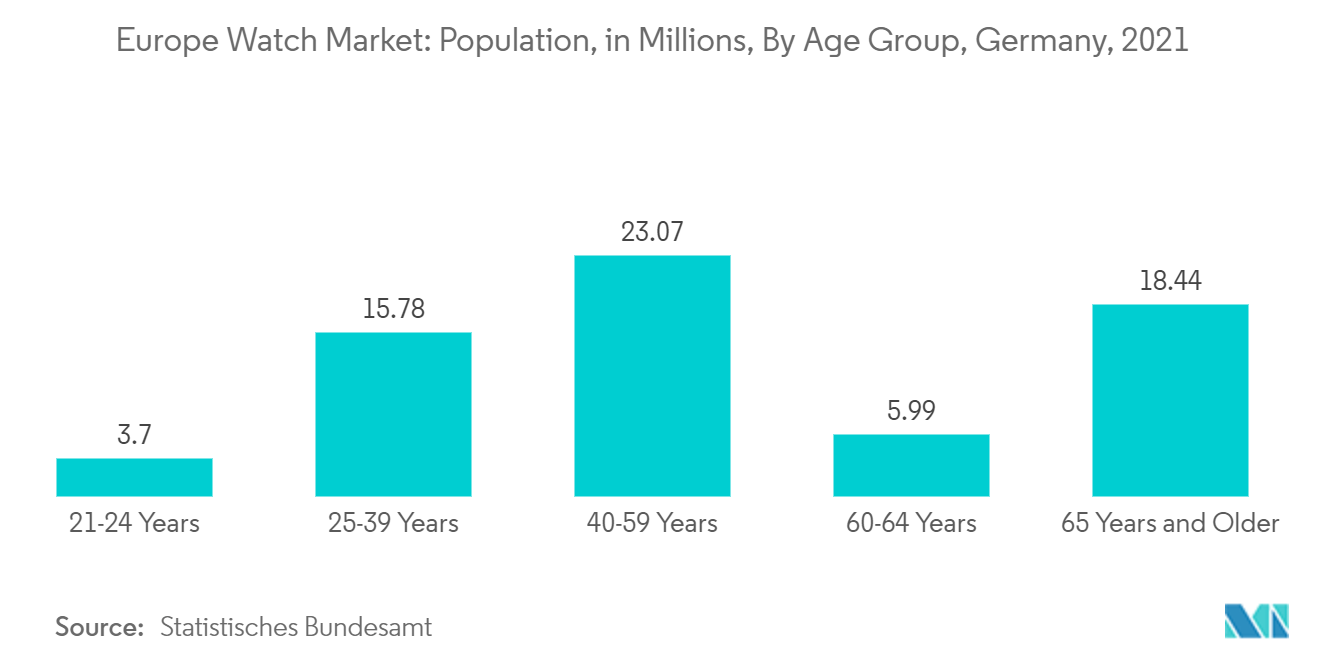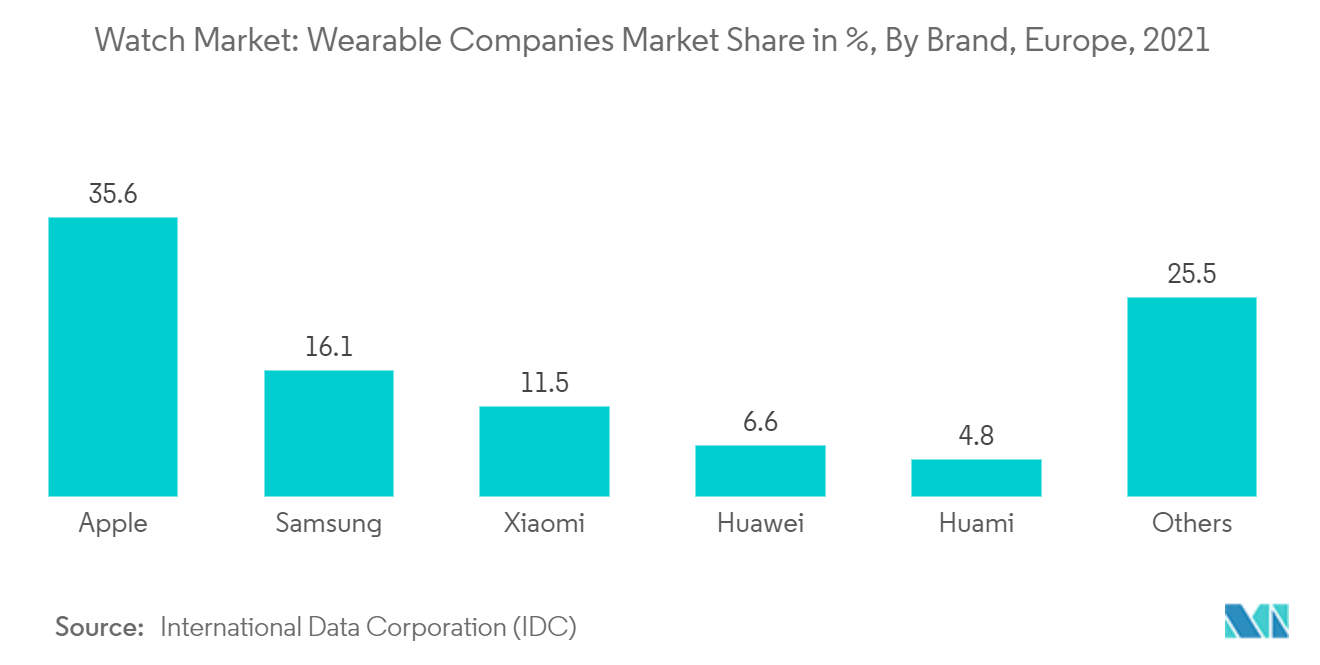Market Trends of Europe Watch Industry
Blending Adventure Sports With Smarter Wearables
- The affluent society across developed countries, specifically in the European Union, is anticipated to have higher average incomes, making them capable enough to pursue recreational and outdoor activities. This is also linked with convenience culture, where the rise of 'empowered consumers' are seeking out more choices within activities along with changing work patterns that facilitate them to use desired time flexibly. The seeking of low-risk activities among the older population is prominent. People between the age group of 40 and 70 cater to two-thirds of the European outdoor activity participation. On the other hand, this segment is also prone to health ailments, and smart wearable that portrays heart rate, and distances covered, among others, have a higher rate of scalability among such consumers.
- Moreover, the population between the age group of 40-70 years old is the largest in many countries of the region. For instance, according to Statistisches Bundesamt, 40-59-year-olds make up the largest age group in Germany, at 23 million people. The most recent figures from 2021 confirm that the next-largest age group was 65 years and older, at 18.44 million. This depicts the need for smartwatches that can display heart rate, blood pressure, electrocardiogram (ECG), skin temperature, and SpO2 sensors that can measure blood oxygen levels among the aged population while they perform any rigorous activities.
- The smart wearable markets in Europe will also be driven by the millennial segment, as a change in their living standard will also upgrade the level of commitment that novel technology offers to streamline their daily activities. Apart from them, sports enthusiasts, athletes, and gym goers also make a major customer base that the market can target. Most of the millennials who participate in outdoor sports and vigorous physical activities often spend significant amounts on their timepieces as they are specifically made for such activities. Hence, players in the market are also focused on launching products in line with the consumer's needs. For instance, in April 2023, Huawei launched its HUAWEI WATCH Ultimate, which it claimed is designed for admirers of extreme sports in Italy. The company claimed it to be the first smartwatch made with quality materials and a luxury design. Such developments and the above-mentioned factors are expected to create enough opportunities for the manufacturers to tap into.

Digital (Smart) Watches to Witness the Fastest Growth
- One of the latest trends expected to gain traction in the smart watch segment is the increasing integration of haptics technology, a standard feature used for alerts and notification purposes. Furthermore, the haptic technology used in these smart watches also eliminates the need to carry a smartphone every time, as they alert the user if there are text messages, e-mails, or calls. This is one of the major reasons for the rise in smartwatches, which is eventually driving the market's growth.
- Also, top European watch manufacturers in this segment are investing in the development of new and updated versions of products. They are launching products with smart features to attract the consumer base and remain competitive in the market. For instance, in September 2022, the Chinese tech company Huawei announced that the Watch D would soon be available in the European market. According to the business, the Huawei wristwatch has integrated blood pressure, electrocardiogram (ECG), heart rate, skin temperature, and SpO2 sensors that can measure blood oxygen levels.
- Apart from these developments, manufacturers are attracting consumers with more innovative features that determine smartwatches as better products than analog watches. Custom-made high hardness with improved durability, large displays with clear vision even in daylight, and scratch resistance are some features companies are stressing incorporating into their products. Moreover, the government policies' direct and indirect support for technologically driven firms is, in turn, boosting this market segment studied.
- For instance, in February 2022, in response to the success of the first work program, the European Innovation Council (EIC) introduced its second work program. Compared to the previous program's budget of USD 1.6 billion, this new program has an enhanced budget of USD 1.8 billion. This program aims to find, create, and implement disruptive breakthroughs and cutting-edge technologies. Thus, the initiatives by the regional government are expected to boost the overall revenue of the watch market in the region.


